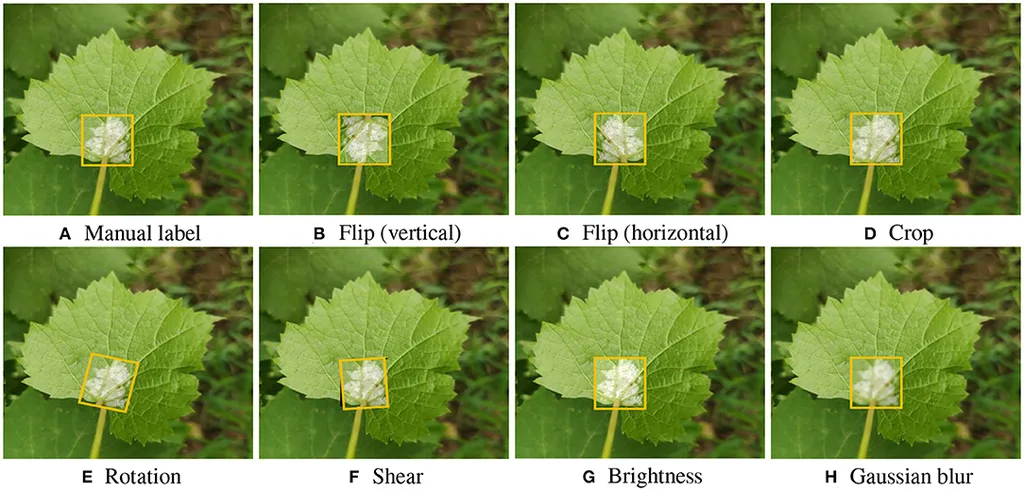In the ever-evolving landscape of precision agriculture, early detection of grapevine diseases is a game-changer, and a new study published in *Frontiers in Plant Science* is making waves with a novel approach to tackle this very challenge. The research, led by Eduardo Farinati Leite from the Center for Embedded Devices and Research in Digital Agriculture (CEDRA) of SENAI-RS in Brazil, introduces VitiForge, a groundbreaking procedural pipeline for generating synthetic images of grape leaves affected by various diseases. This innovation addresses a critical gap in the current methods of disease identification, offering a promising solution for the agriculture sector.
The study highlights a significant hurdle in the real-world application of convolutional neural networks (CNNs) trained on benchmark datasets like PlantVillage. While these models achieve near-perfect accuracy in controlled environments, their performance drops dramatically when faced with the variability of real-world field conditions. Factors such as lighting, backgrounds, and the appearance of lesions introduce complexities that current models struggle to handle.
VitiForge steps in to bridge this gap by generating realistic synthetic images of grape leaves, representing healthy conditions as well as diseases like Black Rot, Esca, and Leaf Blight. This approach is particularly valuable in scenarios where data is scarce or imbalanced, a common challenge in agricultural settings. “VitiForge offers flexibility and scalability under cross-domain and data-scarce conditions,” Leite explains, emphasizing the tool’s potential to revolutionize disease detection in the field.
The study systematically evaluates VitiForge against GAN-based augmentation through a data ablation study on both PlantVillage and FieldVitis, a curated field dataset. Using classifiers like MobileNetV2, InceptionV3, and ResNet50V2, the research demonstrates that VitiForge significantly improves performance in low-data regimes. Remarkably, it enables model training even without real samples, a feat that underscores its potential for widespread adoption in the agriculture sector.
However, the study also reveals that GAN-based augmentation proves more effective once sufficient real data is available. This finding highlights the complementary roles of procedural and GAN-based synthetic data. “Together, they support the development of robust and generalizable models for automated grape disease detection,” Leite notes, pointing to a future where these technologies work in tandem to enhance precision agriculture.
The commercial impacts of this research are substantial. Early and accurate disease identification can lead to significant reductions in yield losses, ensuring sustainable viticulture and boosting the economic viability of grape-growing regions. By providing a scalable and flexible solution, VitiForge paves the way for more efficient and effective disease management practices.
As the agriculture sector continues to embrace technological advancements, the integration of synthetic data generation tools like VitiForge could become a cornerstone of precision agriculture. This research not only addresses immediate challenges but also sets the stage for future developments in the field, offering a glimpse into a future where technology and agriculture converge to create more resilient and productive farming practices.

